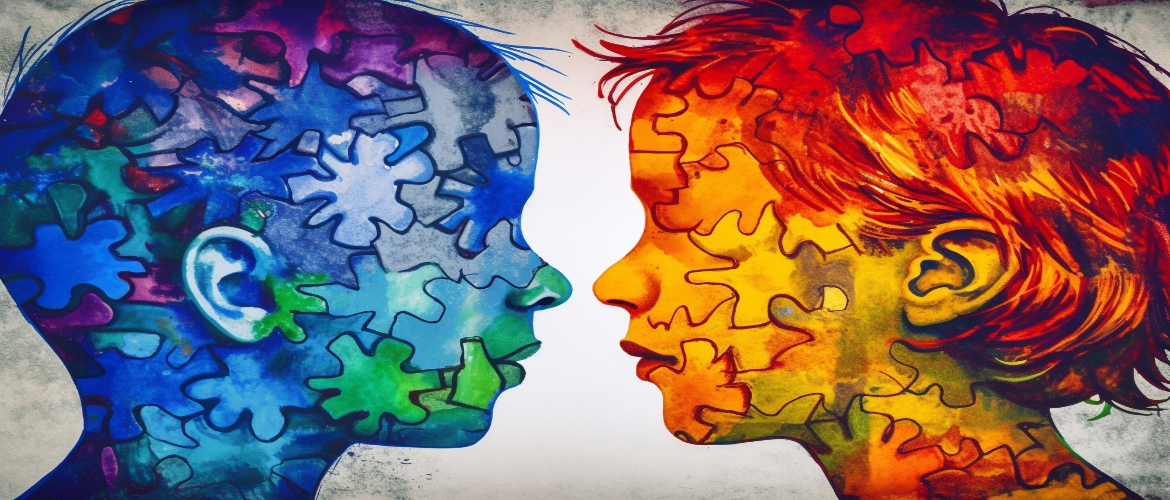
The Symphony of Empathy
- September 25, 2023
- By Lynn D’Cruz
- No Comments

A leader devoid of empathy is devoid of humanity.
Leadership today is often associated with authority, decisiveness and strategic thinking. However, there exists a quieter yet profoundly influential force that can transform organisations and inspire individuals: empathy. The ability to understand and share the feelings of others, to walk in their shoes and to connect on a deep emotional level is the essence of conscious leadership.
In this article, we’ll embark on a journey into the symphony of empathy, exploring its significance, the science behind it and practical ways to cultivate and harness this essential leadership skill.
The heartbeat of connection
Empathy is the heartbeat of human connection, and its significance in leadership cannot be overstated. When leaders genuinely empathise with their team members, colleagues and stakeholders, they create a powerful bond built on trust, understanding alongside mutual respect. This connection forms the foundation for effective communication, collaboration and the cultivation of a positive organisational culture.
But empathy is not a one-size-fits-all concept. It encompasses a spectrum of abilities, from cognitive empathy (understanding another person’s perspective) to emotional empathy (feeling what someone else feels) and compassionate empathy (taking action to help alleviate another person’s suffering). The most effective leaders possess a blend of these empathetic qualities, allowing them to adapt to various situations and respond empathetically in a way that is most meaningful to those they lead.
The science of empathy
Empathy is not merely a soft skill; it is deeply rooted in neuroscience. Mirror neurons, specialised cells in our brains, enable us to mirror and understand the emotions and actions of others. When we see someone experiencing joy, sadness or pain, our mirror neurons fire, enabling us to resonate with their feelings. This neural capacity is the biological basis of empathy.
Recent scientific studies have shown that practicing empathy can lead to numerous benefits, both on an individual and organisational level. Empathetic leaders tend to have more engaged and motivated teams, higher employee retention rates and enhanced problem-solving abilities. Furthermore, they are better equipped to navigate complex situations, build meaningful relationships and foster an inclusive and diverse workplace.
Cultivating empathy in leadership
Empathy is not solely an innate trait; it can be cultivated and developed over time. Here are some practical steps for leaders to enhance their empathetic abilities:
Active listening: One of the most fundamental aspects of empathy is active listening. When you listen with genuine curiosity and without judgment, you create a safe space for others to express themselves. Practice focused listening by maintaining eye contact, asking open-ended questions and giving your full attention to the person speaking.
Perspective-taking: To understand another person’s perspective, try to see the situation through their eyes. What challenges are they facing? What emotions might they be experiencing? This exercise can help you appreciate their point of view and respond more empathetically.
Practice self-compassion: Empathy begins with self-compassion. Be kind and understanding toward yourself, acknowledging your own strengths and limitations. When you can empathise with your own experiences, you’ll be better equipped to empathise with others.
Empathy walks: Take the time to connect with your team members on a personal level. Schedule one-on-one meetings to learn more about their backgrounds, interests and aspirations. This not only deepens your understanding of them but also demonstrates your genuine interest in their well-being. This does not need to be done under formal circumstances.
Empathy in decision-making: When faced with tough decisions, consider the potential impact on individuals and teams. How might your choices affect their emotions, workload or sense of belonging? Strive to make decisions that reflect a balance between empathy and organisational goals.
The ripple effect of empathy
The power of empathy extends far beyond the immediate moment. It creates an effect that influences the entire organisation. When leaders prioritise empathy, they set a cultural tone that encourages others to do the same. As team members witness empathetic leadership in action, they are more likely to practice empathy with their peers, subordinates and even clients or customers.
Empathy also plays a pivotal role in resolving conflicts and fostering collaboration. In high-stress situations or when disagreements arise, empathetic leaders can de-escalate tensions by acknowledging emotions, seeking common ground and working toward mutually beneficial solutions.
Empathy and the future of leadership
As the landscape of leadership continues to evolve, empathy will remain a cornerstone of effective and compassionate leadership. In an era where remote work, digital communication and diverse teams are the norm, the ability to connect on a human level is more critical than ever.
The symphony of empathy in leadership is a harmonious blend of understanding, connection and action. It resonates with individuals and teams, inspiring collaboration, innovation and a sense of belonging. As leaders, when empathy emerge as our intrinsic compass, we create not only better workplaces but also a more compassionate and empathetic world.
Recommended reading:
1. Dare to Lead: Brave Work. Tough Conversations. Whole Hearts by Brené Brown
2. The Empathy Effect: Seven Neuroscience-Based Keys for Transforming the Way We Live, Love, Work, and Connect
Across Differences by Helen Riess, MD
3. The Art of Empathy: A Complete Guide to Life’s Most Essential Skill by Karla McLaren
4. Leaders Eat Last: Why Some Teams Pull Together and Others Don’t by Simon Sinek
Recommended video:
Author
Lynn D’Cruz
Founder & CEO


Like a masterful composition, empathy weaves its harmonious threads through human connection, inspiring understanding, compassion and collaboration.